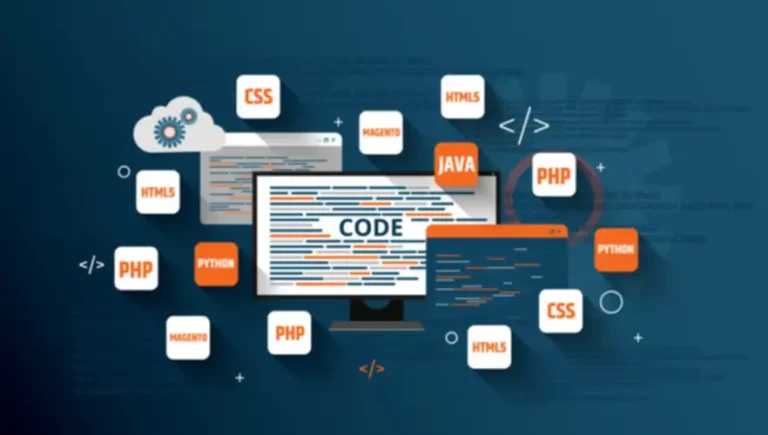To make the microservice catalog useful for developers it’s essential to not dump all of the aforementioned knowledge into the portal’s catalog, since it won’t relieve cognitive load however quite enhance it. Microservices architectures may help What is Microservices Architecture a corporation develop and develop when carried out proficiently. Before adopting such an integrative know-how, a deep data of its benefits and challenges is critical.
Another facet of understanding microservices architectures is recognizing the available choices and choosing the proper know-how. Running microservices in production requires an simply scalable infrastructure, such as container orchestration systems offered by these cloud-native applied sciences. It’s essential to spend time and assets when deciding the deployment methodology and runtime environment to execute microservices successfully in manufacturing.
One of the fastest-growing solutions for making certain enterprise-wide efficiency across a quantity of techniques is the implementation of a microservices architecture. Recent market analysis predicts that the microservices structure sector will develop from $5.59 billion in 2022 to $21.sixty one billion by 2030. Nevertheless, app development groups must be cautious that microservices do present some important drawbacks. Creating an application with multiple microservices that talk with each other or breaking down a monolithic application into several microservices, complexity is hard. They include several impartial companies loosely coupled collectively to construct a completely functioning utility. Designing these microservices requires a deep understanding of the enterprise domain.
Although completely different groups are dealing with completely different services, coping with microservices stays troublesome. If you fail to address these challenges, it’d become a really expensive mistake that would lead to a project and even business failure. This article will put together you for the attainable challenges of working with the microservices architecture. As microservices allow incremental growth and steady supply, organizations’ workers also need to have the ability to provision resources immediately to maintain up. You should also be able to deploy new services or functions quickly to take benefit of microservices. Microservices bring flexibility by permitting using numerous programming languages and different technological bases, within a single enterprise application software program.
Microservices talk through RESTful APIs that change information in JSON and XML codecs. A previously quiet network turns into excessively chatty when microservices are launched. It could be nice if all microservices used the same information structures and communication protocols, however that is usually not the case.
However, microservices structure isolates the failures, reducing the chance of an entire system shutdown. It’s more difficult to manage a mess of smaller programs versus a single, solitary, monolithic utility. Each microservices operates within its personal boundary and has a dedicated datastore to deal with its operations. This ends in lots of knowledge redundancy and synchronization challenges.

In many circumstances, each group uses different technologies and programming languages to create them. On high of that, every service is deployed and hosted on different servers, managing its information via completely different databases. Microservices structure splits an application into a series of independently deployable services. Multiple microservices mix to create an software, every offering a bit of performance for a domain. While making a microservices architecture, you will want to factor in possible failure points like sluggish service, system downtime, and sudden responses.

Authentication and Authorization- Implement robust authentication mechanisms to verify the identification of customers and providers accessing microservices. Use requirements like OAuth2 and OpenID Connect for authentication and JWT for securely transmitting authentication credentials. Service discovery mechanisms present a means for providers to register themselves and uncover different providers throughout the system without prior data of their locations.
Moving from monolith to microservices means much more management complexity. Here are a variety of the challenges we have to consider earlier than making use of to microservices architecture. Microservices are unfastened coupling also builds with fault isolation and better resilience into functions. If certainly one of your microservice turns into unavailable, it won’t have an effect on the complete application. Of course you want to design your microservices are fault toleranced and handle faults appropriately for example by implementing retry and circuit breaking patterns. Even failures occurred, when you repair that failures with none business have an result on, you customer will all the time pleased.
Even when you have a big and complicated app for a startup or as a brand new product, then it is recommended that you chorus from using microservices till the area model for your app is stabilized. It’s better to start out with a modular monolithic approach and once you stabilize your domain model, steadily migrate it to the microservices. This kind of architecture is for building scalable and flexible functions.
You have to fix a enterprise area earlier than you get started with the microservices. But, when working with a model new product or startup, you may need to pivot area fashions a quantity of instances. Making a number of adjustments in microservice boundaries can be very expensive. You break down the codebase of your application into a number of pieces to make it easy and easily maintainable. In such circumstances, you neither have a reason to further break it down, nor it would be of any use. Thus, it’s advisable to not use microservices when engaged on easy and small purposes.
Below are the main features and monitoring instruments worth listening to. Utilizing containers like Docker streamlines the packaging and delivery of microservices together with their dependencies. Containers create an isolated environment for each microservice, guaranteeing consistency and resilience throughout numerous configurations. Container orchestration, such as Kubernetes, simplifies management, deployment, and scaling, whereas additionally providing automatic restoration in case of failures.

Global organizations are more and more excited about microservices architectures and their many cloud-based functionalities. As the numbers continue to rise, their place out there exhibits no indicators of halting. Microservices serve as an instrumental development for creating a number of efficient applications concurrently within an enterprise.
Each service runs a unique process and talks with others by way of a simple methodology, usually an HTTP-based API. Whereas monolithic architectures use a single codebase that holds all the transferring parts, microservices structure breaks down the application into smaller, manageable pieces. Addressing these challenges requires cautious planning, the best instruments, and a willingness to adapt to new practices and mindsets. However, with a microservices structure, every service can be scaled independently.
In traditional layered architectures, an utility sometimes shares a standard stack, with a large relational database supporting the entire utility. This method has several challenges for instance each part of an software should share a standard stack, knowledge mannequin and database even if there’s a clear, higher software for the job for sure modules. It’s actually irritating for developers who’re aware that a better, extra efficient way to build these elements is out there. Also builders is frustrating when the applying stack is too old and can’t apply new finest practices on their initiatives.
Transform Your Business With AI Software Development Solutions https://www.globalcloudteam.com/ — be successful, be the first!